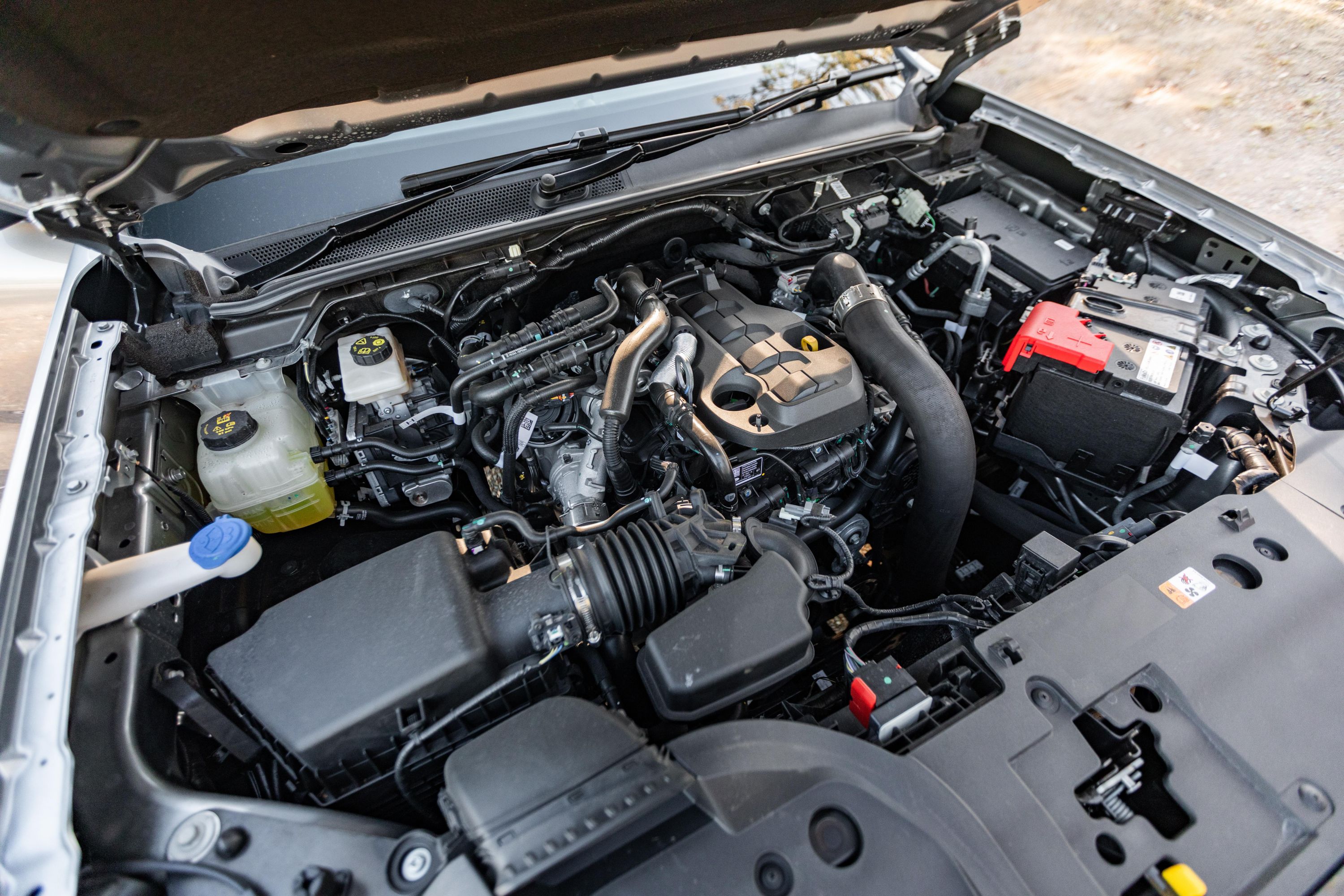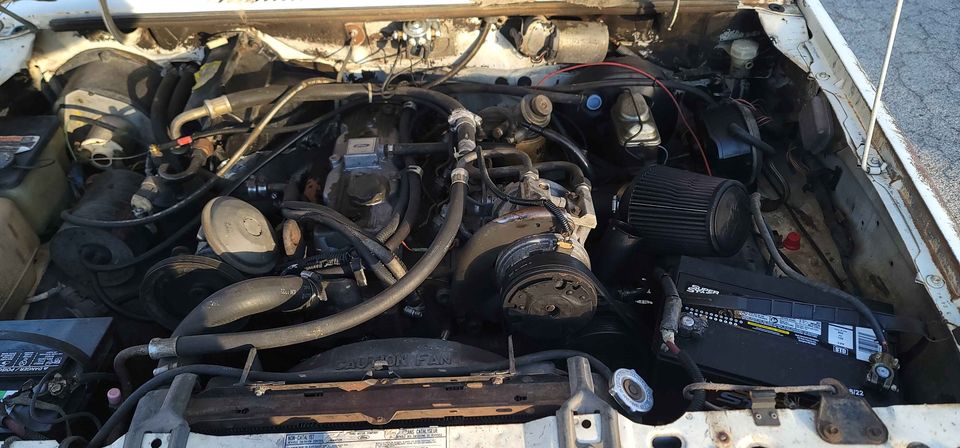How the 2.2 Ford Ranger Engine Stands Out for Durability and Power in Tough Conditions
How the 2.2 Ford Ranger Engine Stands Out for Durability and Power in Tough Conditions
Blog Article
Understanding the Basics of Automobile Engines: Functions, attributes, and kinds

Summary of Cars And Truck Engines
A car engine serves as the heart of a lorry, transforming gas right into power to move it onward. This detailed system comprises different components that function in unison to make certain optimal performance and effectiveness. The essential operation of an auto engine entails the interior burning process, wherein gas and air are combined, ignited, and removed to create power.
The engine's layout can considerably influence its efficiency, gas efficiency, and emissions. Trick parts include the cyndrical tube block, pistons, crankshaft, and camshaft, each playing a crucial duty in the engine's total feature.
In addition to these components, engines typically use numerous systems such as fuel shot, ignition, and cooling down systems to boost performance and longevity. Understanding the basic technicians of car engines is essential for diagnosing concerns and performing maintenance, ultimately contributing to the lorry's dependability and performance gradually.

Types of Car Engines
Car engines can be classified into several types based on their layout, fuel kind, and functional principles. 2.2 ford ranger engine. One of the most typical groups consist of inner combustion engines (ICE), electrical engines, and hybrid engines
Internal combustion engines, which can be additional divided right into gas and diesel motor, run by sparking a fuel-air mixture to generate power. Gasoline engines are commonly lighter and smoother, while diesel engines are a lot more fuel-efficient and offer better torque.
Electric engines utilize electrical power kept in batteries to power an electrical motor, providing immediate torque and no emissions during procedure. As innovation advancements, electric lorries (EVs) are increasingly becoming prominent for their ecological benefits and reduced running prices.
Hybrid engines incorporate aspects of both interior combustion and electrical engines, enabling adaptable source of power and enhanced gas performance. They can run in various settings, using either the gasoline engine, the electrical motor, or both at the same time.
Each kind of engine has distinct benefits and disadvantages, affecting their application in various car kinds and market segments, from portable vehicles to sturdy trucks. Comprehending these kinds is essential for making educated decisions concerning lorry option and performance assumptions.
Engine Functions Discussed
Understanding engine functions is crucial for understanding just how lorries operate successfully. At the core of any internal burning engine exists the basic procedure of transforming fuel right into power. This process begins with the intake stroke, where air and fuel are drawn right into the combustion chamber. Following this, the compression stroke presses the air-fuel blend, raising its temperature and stress.
The ignition takes place following, stiring up the combination and developing a rapid expansion of gases. This pressure drives the piston down throughout the power stroke, which eventually translates right into the rotational movement of the crankshaft. The exhaust stroke then expels the invested gases from the chamber, making means for a brand-new cycle to begin.
In addition to these primary functions, engines additionally integrate systems that take care of air conditioning and lubrication, ensuring ideal functional temperature levels and lowering rubbing between relocating components. This intricate interaction of features makes it possible for the engine to produce the power necessary for car propulsion while preserving effectiveness and dependability. Comprehending these features provides important understanding right into the intricacies of automobile design and boosts the capability to diagnose and resolve engine-related concerns efficiently.
Trick Engine Attributes
Engine style encompasses several crucial functions that dramatically influence efficiency, performance, and resilience. One of one of the most important aspects is the engine configuration, which consists of inline, V-type, and flat layouts. Each arrangement influences the engine's equilibrium, power, and size outcome, therefore impacting overall car characteristics.
An additional important function is the engine displacement, describing the overall quantity of all cyndrical tubes. Bigger variations normally yield more power however may jeopardize fuel performance. Engine products also play a pivotal duty; light-weight and high-strength products, such as aluminum and magnesium alloys, enhance efficiency without adding extreme weight.
The sort of fuel shot system utilized-- such as multi-port or direct shot-- impacts burning performance and exhausts. Turbocharging and supercharging are features that enhance engine performance forcibly added air right into the combustion chamber, increasing power outcome without dramatically boosting engine size.
Lastly, the existence of sophisticated engine administration systems enhances fuel-air combination and ignition timing, contributing to smoother operation and far better fuel economic situation. Jointly, these features specify an engine's abilities, setting the structure Read Full Report for its performance and longevity in a competitive automobile landscape.
Maintenance Tips for Engines
Proper engine upkeep is vital for guaranteeing optimum efficiency and longevity, as disregarding regular care can bring about significant issues down the line. To maintain your engine properly, begin with next regular oil modifications, normally every 3,000 to 7,500 miles, depending on the type of oil utilized. Fresh oil lubes engine components, reducing friction and wear.
Additionally, keeping track of coolant levels is essential to stop getting too hot. Make sure that the coolant is topped up and remains in excellent problem to keep effective temperature level policy. On a regular basis replace and check air and fuel filters, as stopped up filters can impede air flow and gas shipment, jeopardizing engine effectiveness.
In addition, take notice of ignition system and ignition systems. Damaged or used ignition system can result in misfiring and lowered efficiency. Examining the battery terminals and links for rust is likewise vital, as a weak battery can impact engine beginning.

Verdict
In summary, a thorough understanding of car engines incorporates different types, functions, and essential features that substantially influence car performance. Interior burning engines, along with hybrid and electric alternatives, show diverse systems for power conversion. 2.2 ford ranger engine. Recognizing the important features, such as consumption and exhaust cycles, along pop over to this web-site with important engine features like configuration and gas injection systems, gears up car proprietors with the knowledge needed for effective maintenance and operation, eventually boosting lorry durability and effectiveness
A cars and truck engine serves as the heart of an automobile, transforming fuel into mechanical power to thrust it onward. The essential operation of an auto engine involves the interior burning process, where fuel and air are mixed, fired up, and gotten rid of to develop power.
Consistently change and inspect air and fuel filters, as blocked filters can hinder air movement and gas delivery, compromising engine efficiency. - 2.2 ford ranger engine
In recap, a detailed understanding of cars and truck engines includes numerous kinds, functions, and crucial attributes that significantly affect lorry performance. Recognizing the important functions, such as intake and exhaust cycles, alongside crucial engine attributes like configuration and gas shot systems, furnishes vehicle owners with the understanding required for reliable upkeep and procedure, inevitably enhancing car longevity and effectiveness.
Report this page